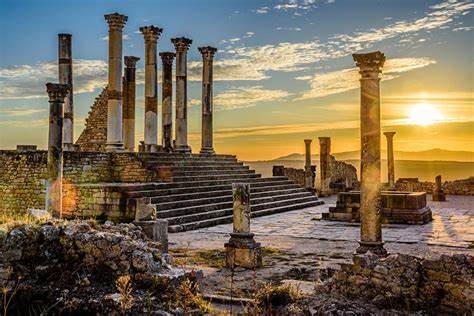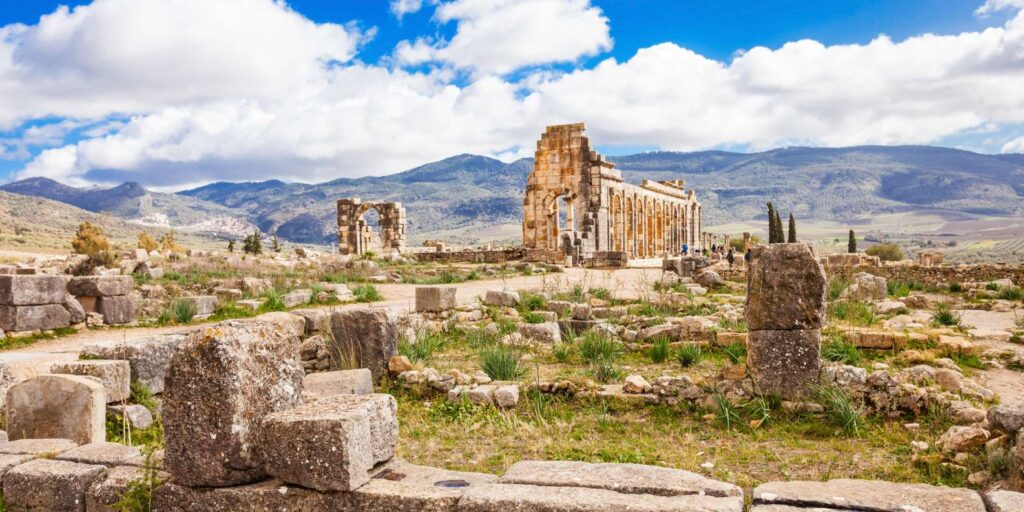Nestled in the fertile plains of Morocco, near the city of Meknes, lies one of the country’s most treasured archaeological sites: Volubilis. This ancient Roman city, a UNESCO World Heritage site, offers a fascinating glimpse into Morocco’s rich historical tapestry.



History and Significance
Volubilis was founded in the 3rd century BC and became a prominent city under Roman rule from the 1st century AD. It served as the administrative center of the Roman province of Mauretania Tingitana. The city thrived, thanks to its strategic location and fertile lands, producing grain, olive oil, and other goods for export across the Roman Empire.
Architectural Marvels
Walking through Volubilis, visitors are transported back in time as they explore well-preserved ruins that span nearly 2,000 years. The city is renowned for its impressive structures, including the grand Basilica, the majestic Capitoline Temple, and the stunning Triumphal Arch. These monumental buildings showcase the architectural prowess of the Romans and their ability to integrate local and imported styles.
Mosaics and Artifacts
One of the highlights of Volubilis is its exquisite mosaics, which adorn the floors of several prominent houses. These intricate artworks depict scenes from Roman mythology, daily life, and nature, providing valuable insights into the lives and beliefs of its inhabitants. Notable mosaics include the depiction of Hercules’ labors and the fascinating “House of Orpheus.”
Visiting Volubilis
A visit to Volubilis is a journey through history. The site is easily accessible from Meknes and offers a serene escape into the past. As you wander through the ruins, take time to appreciate the panoramic views of the surrounding countryside, which add to the sense of timelessness that pervades the site

